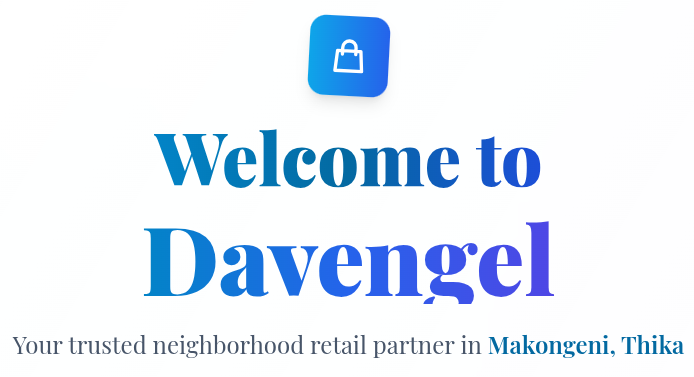Davengel Retail
Published
Jul 18, 2025
Author
Lewis
Reading Time
2 minute read
1. Discovering the Neighborhood Retail Challenge
Davengel started from a simple observation: local corner shops in Makongeni, Thika rely on manual ledgers and cash drawers, leading to stockouts, pricing errors and slow end‑of‑day reconciliations. I spent a week visiting shop owners and shadowing their daily routines. Their biggest frustrations were lost sales due to empty shelves, untracked credit accounts and time wasted on paper‑based bookkeeping.
2. Architecting a Role‑Based Solution
Armed with those insights, I defined three user roles (Customer, Employee and Credit‑Account Client) each with distinct needs. Customers should browse inventory and, if approved, access their credit balances. Employees require real‑time sales entry, stock updates and reconciliation tools. Credit clients need a portal to view purchase history and make repayments. I chose Laravel for its expressive MVC framework and used Spatie Permission to enforce these role‑based boundaries.
3. Building Core Retail Features
The first milestone was the Customer Catalog: a searchable grid of fresh produce, bread, flour, beverages, coffee and hygiene products. Next came the Employee Dashboard: cashiers can ring up sales using barcodes or manual search, with inventory counts updating instantly via Eloquent events. Finally, the Credit Portal lets approved clients log in, view outstanding balances and submit payments, all tracked automatically in MySQL with Redis caching for performance.
4. Enhancing UX with Tailwind and Alpine.js
To keep the interface lightweight yet interactive, I used Blade templates styled with Tailwind CSS. Dropdown menus, modal dialogs and dynamic search filters were powered by Alpine.js; no heavy JavaScript frameworks required. This choice ensured sub‑200 ms page loads and a snappy experience even on low‑end devices common in the field.
5. Deploying, Refining and Next Steps
After development, I version‑controlled the project in GitHub, set up CI workflows with GitHub Actions, and deployed to ShujaaHost via Forge. Early feedback from a local shop owner led to real‑time alert banners for low‑stock items and a daily sales summary email. Next, I plan to integrate SMS notifications for critical alerts and build a Flutter mobile companion app so Davengel can run offline in areas with spotty connectivity. This solo project illustrates how focused user research and Laravel’s ecosystem can transform neighborhood retail operations.
Image Gallery

Enjoyed this article?
Share it or download for offline reading
Want to Learn More?
Explore more tech insights or discuss your project needs